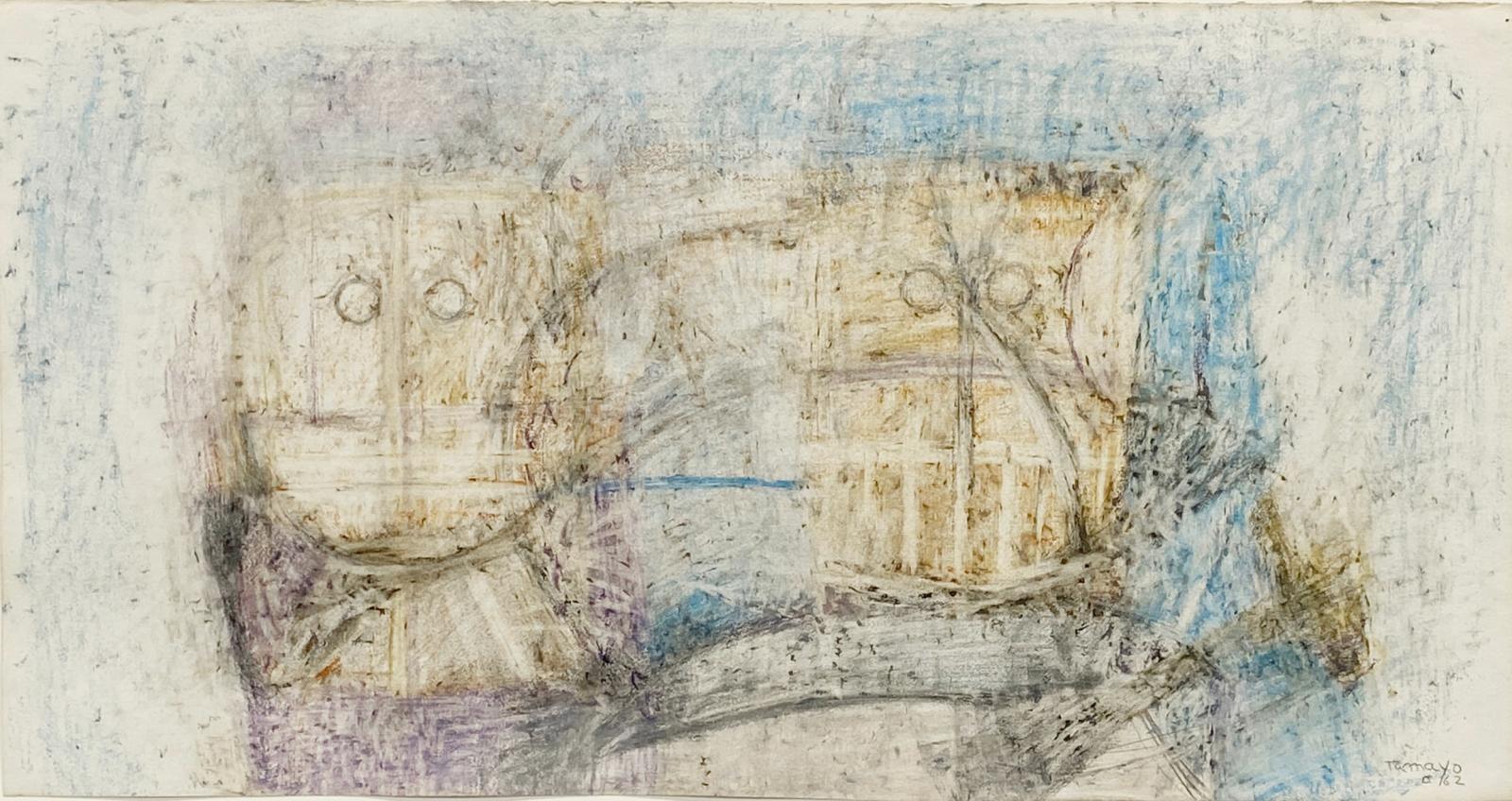










Framed: 27 x 41 1/2 inches
artist
Tamayo was a renowned Mexican painter, printmaker, and muralist celebrated for his vibrant use of color and his synthesis of modern European styles with Mexican cultural themes.
Unlike his contemporaries Diego Rivera, José Clemente Orozco, and David Alfaro Siqueiros, who were closely tied to political muralism, Tamayo focused on universal human themes and a more personal, expressive approach. His work blends Cubism, Surrealism, and Mexican folk traditions, reulting in a style marked by emotional intensity and symbolic imagery.
Over his long career, Tamayo created numerous murals, paintings, and graphic works, exhibiting internationally and helping to bring Mexican art to a global audience. His legacy includes the founding of the Museo Tamayo in Mexico City, which houses a major collection of modern art.
Description
Dos Cabezas was produced during Tamayo’s most productive part of his career. It was during this time the artist was dividing his time between New York, Mexico City, and Paris. Tamayo, a Mexican artist, drew inspiration from both his pre-Columbian heritage and European Modernism, including Surrealism, to create a unique style that blended figurative abstraction with surrealist influences.
Here in Dos Cabezas, Tamaya creates a dreamlike image of two friends, however there are three heads suggesting a layered meaning. Perhaps the artist was exploring the concept of “like mindedness”. Surrealism investigates the potential that the subconscious mind can transcend traditional reality. Here, in Dos Cabezas, Tamayo juxtaposes the imagery of two heads with peculiar eyes while intimating the presence of another spirit between them. Tamayo may have been exploring the subconscious to create his own unique visual language with his frenzied marks that are both subtle in color but intense in character.
provenance
Sotheby's, NY Nov 1993
Private collection, New York, acquired from the above
Private collection, acquired from the above
Christie's NY, March 2025










